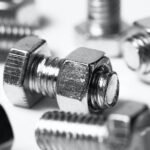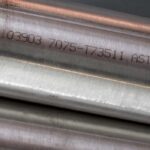Difference Between 316 and 316L Stainless Steel
There are various stainless steel grades, and they are divided into four main groups. The austenitic stainless steel category is among the most significant. Based on their chemical makeup, the austenitic stainless steel alloys are further divided into a number of categories. The 300 series contains one of the stainless steel grades that receives the most attention. These grades are particularly useful in many different fields, such as shipping, maritime engineering, general engineering, the petrochemical industry, pharmaceuticals, and the food business. Given this, grade 316 is the 300 series alloy that is utilised the second most frequently. Grade 316 is changeable, like the majority of austenitic stainless steel alloys. Stainless steels frequently undergo modifications based on their intended use.
The modifications often involve small alterations to the components for a given chemical composition, such as additions or deletions. For instance, the alloy of marine grade 316 stainless steel has more carbon. When carbon is exposed to high temperatures, it creates a carbide precipitate that promotes sensitization at grain boundaries. During welding operations, the metal weakens as a result of the sensitization. Because some melting of the metal is required to fuse it to the other part or to fuse it to itself to make a complete part, welding temperatures are frequently greater. Therefore, compared to the remaining surface of the component, the melted portion, which is the heat impacted weld zone, tends to have inferior corrosion resistance qualities. The corrosion resistance remains stable because the use of weld treatments did not heat the other surface area. The welded components made of grade 316 stainless steel are subject to this issue. To address this issue, producers created a low carbon variant of this specific alloy.
The price difference between 316 and 316l stainless steel
Although the alloy undergoes elemental changes, the material may still be dual certified because the changes are usually quite slight. The dual certified alloy will be marked as 316/316L as a result. As a result, the cost of both of these alloys would be nearly same.
316 and 316l comparison
Manufacturers also add nitrogen to the alloy of stainless steel grade 316L, which has a reduced carbon content. The alloy should contain nitrogen for a number of reasons. First, as carbon is reduced, stainless steel grade 316’s total mechanical strength declines. Second, it loses some of its tolerance to heat. Grade 316L, however, can be welded without any sensitivity to intergranular corrosion because to the reduced amount of carbon in its chemistry.
Difference between 316 and 316l corrosion resistance
Grade 316 stainless steel was intended to be introduced to the market because of its exceptional weldability, as was already established. By reducing the carbon concentration, the alloy becomes less susceptible to intergranular corrosion, especially in the heat-affected weld zone. Because it can withstand saltwater and brine solutions, the low carbon variant of the alloy—which is similar to grade 316—may also be referred to as marine grade steel. As a result, the alloy has two certifications to meet the requirements of various applications. Additionally, it can withstand air corrosion, also known as oxidation resistance, just as grade 316. Dual certified alloys can be used in applications that involve halogens like fluorine, chlorine, and bromine.




